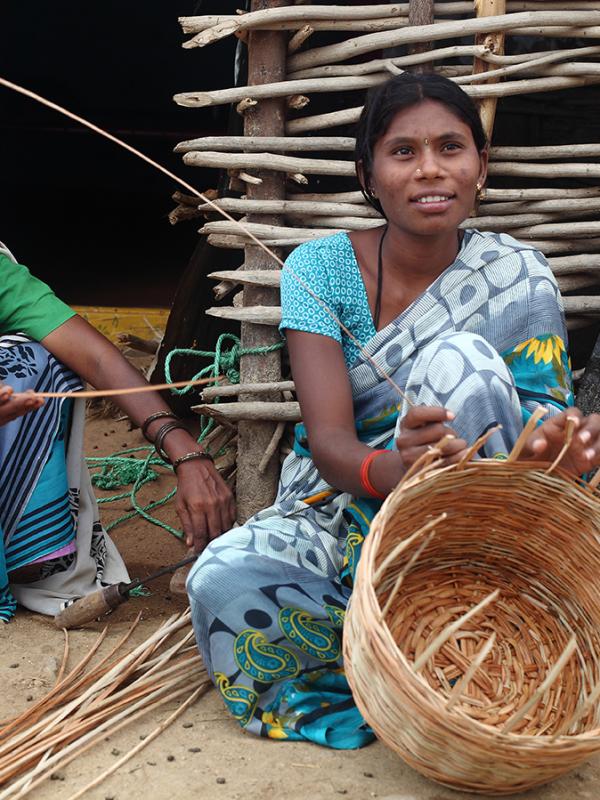Breadcrumb
Since the 2000's, India has made remarkable progress in reducing absolute poverty. Between 2011 and 2015, more than 90 million people were lifted out of extreme poverty.
However, the COVID-19 pandemic led India’s economy into a contraction of 7.3 per cent in 2021 financial year, despite well-crafted fiscal and monetary policy support. Following the deadly ‘second wave,’ economic growth in the 2022 financial year is expected to be nearer to the lower boundary of the range of 7.5 to 12.5 per cent – still putting India among the fastest growing economies in the world. Successful implementation of agriculture and labor reforms would boost medium-term growth, while weakened household and corporate balance sheets may constrain it. Recent projections of GDP per capita growth, taking into account the impact of the pandemic, suggest that poverty rates have likely reverted to estimated levels in 2016.
The economic slowdown triggered by Covid-19 had a significant impact especially on poor and vulnerable households. The informal sector, where the vast majority of India’s labor force is employed, has been particularly affected. As in most countries, the pandemic exacerbated vulnerabilities for traditionally excluded groups, such as youth, women, and migrants. Labor market indicators suggest that urban households are now more vulnerable to fall into poverty than they were before the onset of the pandemic.
The response of the government to the COVID-19 outbreak was swift and comprehensive. A national lockdown to contain the health emergency was complemented by a comprehensive policy package to mitigate the impact on the poorest households (through various social protection measures) as well as on small and medium enterprises (through enhanced liquidity and financial support).
To further rebuild, it will be essential for India to stay focused on reducing inequality, even as it implements growth-oriented reforms to get the economy back on track. The World Bank is partnering with the government in this effort by helping strengthen policies, institutions, and investments to create a better future for the country and its inhabitants through green, resilient and inclusive development.
Andhra Pradesh
With 26 districts and a geographical area of 1,62,970 square km, Andhra Pradesh ranks as the 8th largest State in the country. Situated in the tropical region, the state has the 2nd longest coastline in the country with a length of 974 km. Andhra Pradesh is the 10th largest state in the Country accounting for 4.09 percent of the total population of the country, as per the 2011 Census. The decadal growth of the population rose from 18.88 per cent during 1961-71 to 21.13 per cent during 1981-91. Subsequently, a significant decline was observed in population growth falling to 9.2 per cent during 2001-11, lower than the All-India's growth rate of 17.70 per cent.
The density of the population for Andhra Pradesh as per the 2011 Census is 304 persons per square kilometer, compared to 382 persons per square kilometer at all India levels in 2011. Krishna district has the highest density at 518 while YSR and Prakasam districts have the lowest population density with less than 200.
The literacy rate of the State is 67.35 per cent in 2011 as compared to 62.07 per cent in 2001. The literacy rate of the State is lower than the all-India literacy rate of 72.98 per cent. Literacy in Andhra Pradesh increased by over 37 percentage points from 29.94 per cent in 1981 to 67.35 per cent in 2011. Female literacy rates have gone up from 52.72 per cent in 2001 to 59.96 per cent in 2011.
The government is committed to achieving 100% literacy and several schemes have been initiated to bring about quantitative and qualitative improvement to retain children in schools. Some of the strategies implemented for the universalization of elementary education are strengthening existing schools, implementing the Jagananna Ammavodi, supply of student kits under Jagananna Vidya Kanuka, Naadu-Nedu, and other types of educational facilities in small and poorly served locations.
The state of Andhra Pradesh is located in the southeastern part of the Indian subcontinent and is bounded by the Indian states of Tamil Nadu to the south, Karnataka to the southwest and west, Telangana to the northwest and north, and Odisha to the northeast. Andhra Pradesh's eastern boundary is a 600-mile (970-km) coastline along the Bay of Bengal. The state of Andhra Pradesh was formed on November 1, 1956. Through the States Reorganization Act of 1956, the state of Hyderabad was split up, and its Telugu-speaking districts (constituting Telangana) joined with the Andhra state.


